Turcotte Martin Eye Blog
Learn more about optometrist care in our blog!

Switching to contact lenses for the first time can be both exciting and a little intimidating. Whether you're making the change for convenience, sports, or aesthetics, it's natural to wonder how long it will take to adjust. The good news is, with proper guidance and care, most people adapt to contact lenses relatively quickly.

For individuals with irregular corneas, severe dry eye, or other vision challenges that cannot be corrected with standard contact lenses or glasses, scleral lenses offer a transformative solution. These specialized lenses vault over the cornea and rest on the sclera, providing exceptional comfort and visual clarity. Let’s explore their unique features, success rate, and the benefits they offer for patients with complex vision needs.

Dry eye syndrome can make wearing contact lenses uncomfortable, but it doesn’t mean you have to give them up entirely. If you struggle with dryness, irritation, or a gritty sensation when wearing contacts, there are solutions that can help you achieve greater comfort. By selecting the right type of lenses and following proper eye care practices, you can continue wearing contacts while managing your dry eye symptoms effectively.

Wearing contact lenses can be a convenient and effective way to correct vision, but it's important to be aware of the potential risks associated with them. Contact lens infections and complications can range from mild discomfort to serious vision-threatening conditions. Understanding the signs and symptoms of these issues is crucial for maintaining eye health and seeking prompt medical attention when necessary.

Regular contact lenses do not work for everyone. Some people need something different. That is where scleral lenses come in. These special contacts are bigger than regular ones. Yet, they have changed the game for those who thought they would never wear contacts again.

For many contact lens wearers, sensitive eyes can present unique challenges. Redness, irritation, and discomfort can make wearing contacts a less enjoyable experience. Fortunately, there are ways to manage sensitivity while still enjoying the benefits of contact lenses. Here are some expert tips to help you wear contacts comfortably, even with sensitive eyes.

For many people, contact lenses are a convenient and effective way to improve their vision. However, just like with glasses, your contact lens prescription can change over time, which is why it’s important to update it regularly. But how do you know when it’s time to update your contact lenses? Let's take a closer look at the factors that can affect your prescription and the importance of regular eye exams.

Vision correction is an integral aspect of modern life and contact lenses have become a popular choice for many individuals seeking a convenient and discreet solution. However, contact lens discomfort is a common issue that can significantly impact your daily routine and overall eye health. Contact lens discomfort can manifest in various forms, ranging from mild irritation to severe pain or vision impairment. It is crucial to understand the underlying causes and take appropriate measures to address them promptly.

Vision correction is a crucial aspect of maintaining good eye health and ensuring clear, comfortable vision. Whether you're nearsighted, farsighted, or have astigmatism, there are various options available to address your visual needs. One popular choice among vision correction solutions is contact lenses.

Wearing contact lenses can be a convenient and effective way to correct your vision. Whether you're nearsighted, farsighted, or have astigmatism, there are various types of contact lenses available to suit your specific needs. By understanding the different types of contact lenses and their unique features, you can make an informed decision that will enhance your visual experience and improve your overall quality of life.






